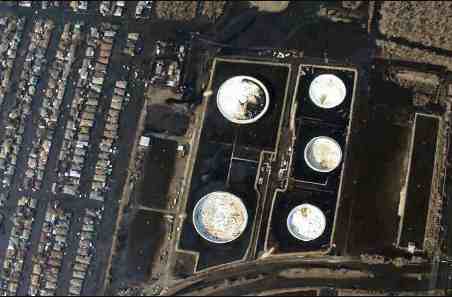
Credit: Nathaniel Warner
Scientists have developed new geochemical tracers that can identify hydraulic fracturing flowback fluids that have been spilled or released into the environment.
The tracers have been field-tested at a spill site in West Virginia and downstream from an oil and gas brine wastewater treatment plant in Pennsylvania.
“By characterizing the isotopic and geochemical fingerprints of enriched boron and lithium in flowback water from hydraulic fracturing, we can now track the presence of ‘frack’ fluids in the environment and distinguish them from wastewater coming from other sources, including conventional oil and gas wells,” said Duke University geochemist Avner Vengosh, who co-led the research.
“This gives us new forensic tools to detect if frack fluids are escaping into our water supply and what risks, if any, they might pose.”
Using the tracers, scientists can determine where frack fluid contamination has–or hasn’t–been released to the environment and, ultimately, help identify ways to improve how shale gas wastewater is treated and disposed of.
The researchers published their findings today in the journalEnvironmental Science & Technology. Their study, which was funded by the National Science Foundation (NSF), is the first to report on the development of the boron and lithium tracers.
“With increasing exploitation of unconventional oil and gas reservoirs through the use of hydraulic fracturing, it’s important that we are able to assess the extent of hydraulic fracturing fluids entering the environment,” said Alex Isern, section head in NSF’s Division of Earth Sciences, which funded the research.
“This work is critical as it demonstrates that geochemical fingerprinting provides a powerful tool to differentiate potential sources of contamination and therefore guide efforts to mitigate environmental impacts.”
Adds Nathaniel Warner of Dartmouth College, lead author of the paper, “This new technology can be combined with other methods to identify specific instances of accidental releases to surface waters in areas of unconventional drilling.
“It could benefit industry as well as federal and state agencies charged with monitoring water quality and protecting the environment.”
Hydraulic fracturing fluids–or frack fluids–typically contain mixes of water, proprietary chemicals and sand. Mixtures can vary from site to site.
Drillers inject large volumes of the fluids down gas wells at high pressure to crack open shale formations deep underground and allow natural gas trapped within the shale to flow out and be extracted.
After the shale has been fractured, the frac fluids flow back up the well to the surface along with the gas and highly saline brines from the shale formation.
Some people fear that toxic frack fluid chemicals in this flowback could contaminate nearby water supplies if they’re accidentally spilled or insufficiently treated before being disposed of.
“The flowback fluid that returns to the surface becomes a waste that needs to be managed,” Vengosh explained.
Pages: 1 2




